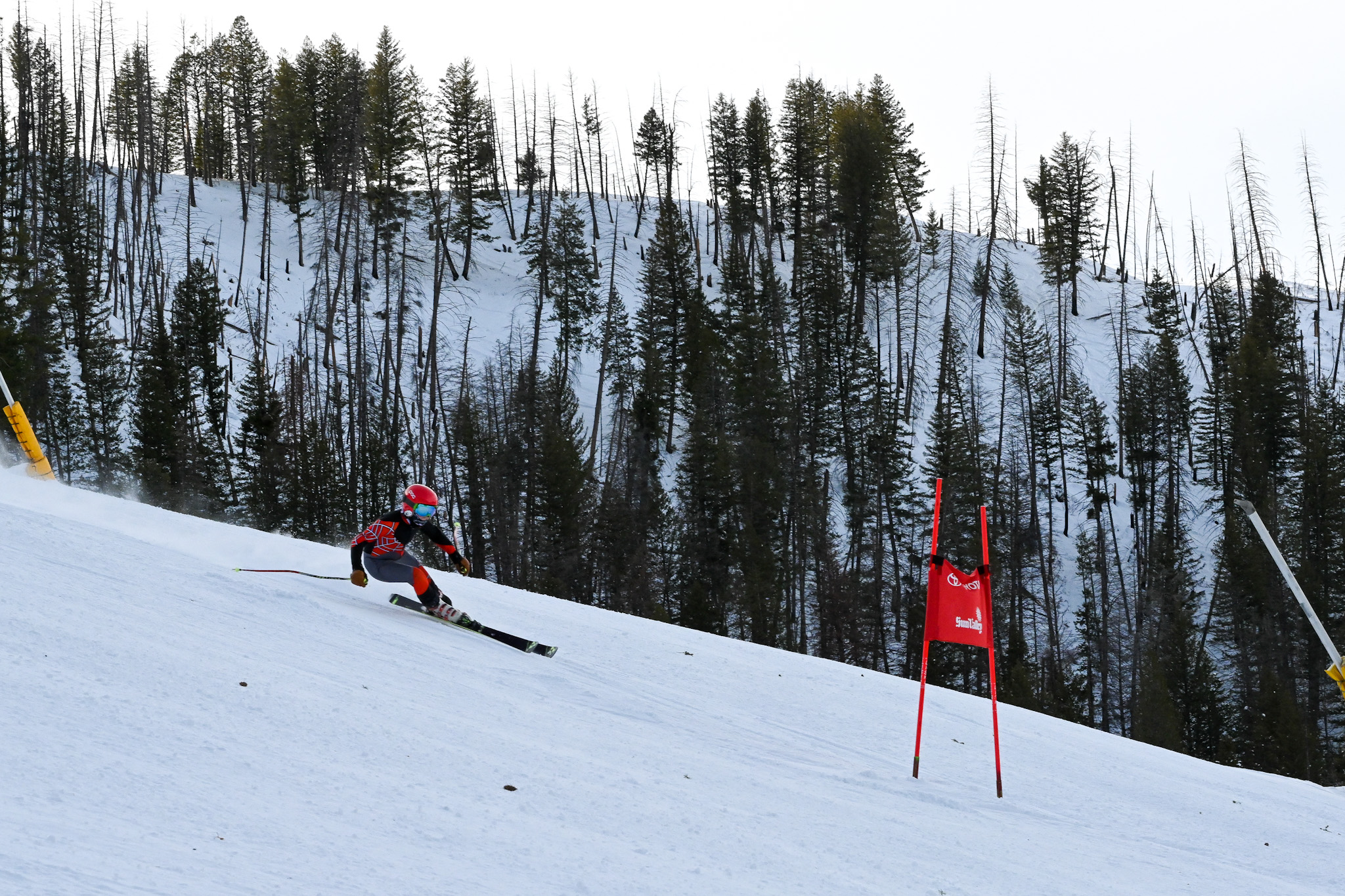From the start gate to the finish line: a week with the Alpine program
From the start gate to the finish line: a week with the Alpine program
With the holiday season in the rearview mirror and the thick of competition season picking up, SVSEF Alpine teams find themselves in the heat of athletic programming. Merely following them around for a week—let alone actually training—is exhausting work. So, we followed them around for you.
We’ll start off by heading to Rotarun for some weekday training. From 3 P.M. to 5 P.M., you can find Mini World Cup, North Series, and the IMD team training on the ‘little ski hill with a big heart.’ With North/South-split training, these teams alternate between Rotarun days spent skiing together, and Baldy days, where teams conduct more isolated training.
On Rotarun, the flow of athletes up and down the hill is constant; at any given time, an athlete is either on the slope or watching teammates from the poma lift. The only real moment of stillness is that spent listening to a coach’s advice. The minimal turn-around time keeps athletes engaged, and steady repetition creates tighter feedback loops between the coach, the athlete, and the athlete’s skiing.
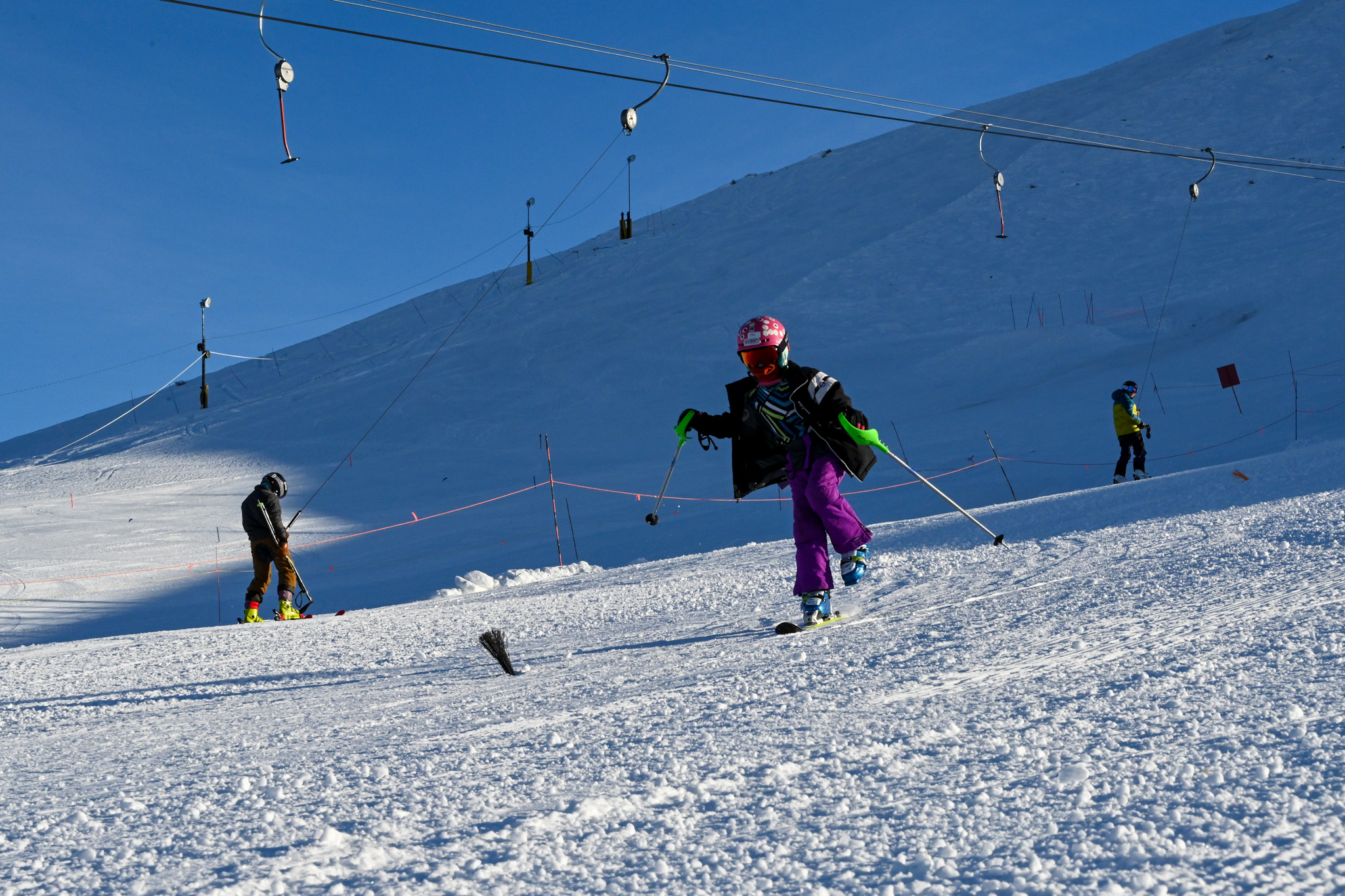
The athletes show off the comprehensive benefits of this fast-paced repetition as they execute drills. They are charged with one-skiing a small course of brushes—commonly called carrots—on just enough of a fall-away slope to challenge their natural balance. While there were plenty of blowouts, there was a steady determination among athletes, and a tangible increase in comfort with each lap. Over time the athletes even manage to master the single-ski poma ride, something the 23-year-old lifetime skier and author of this post would hardly think to attempt.
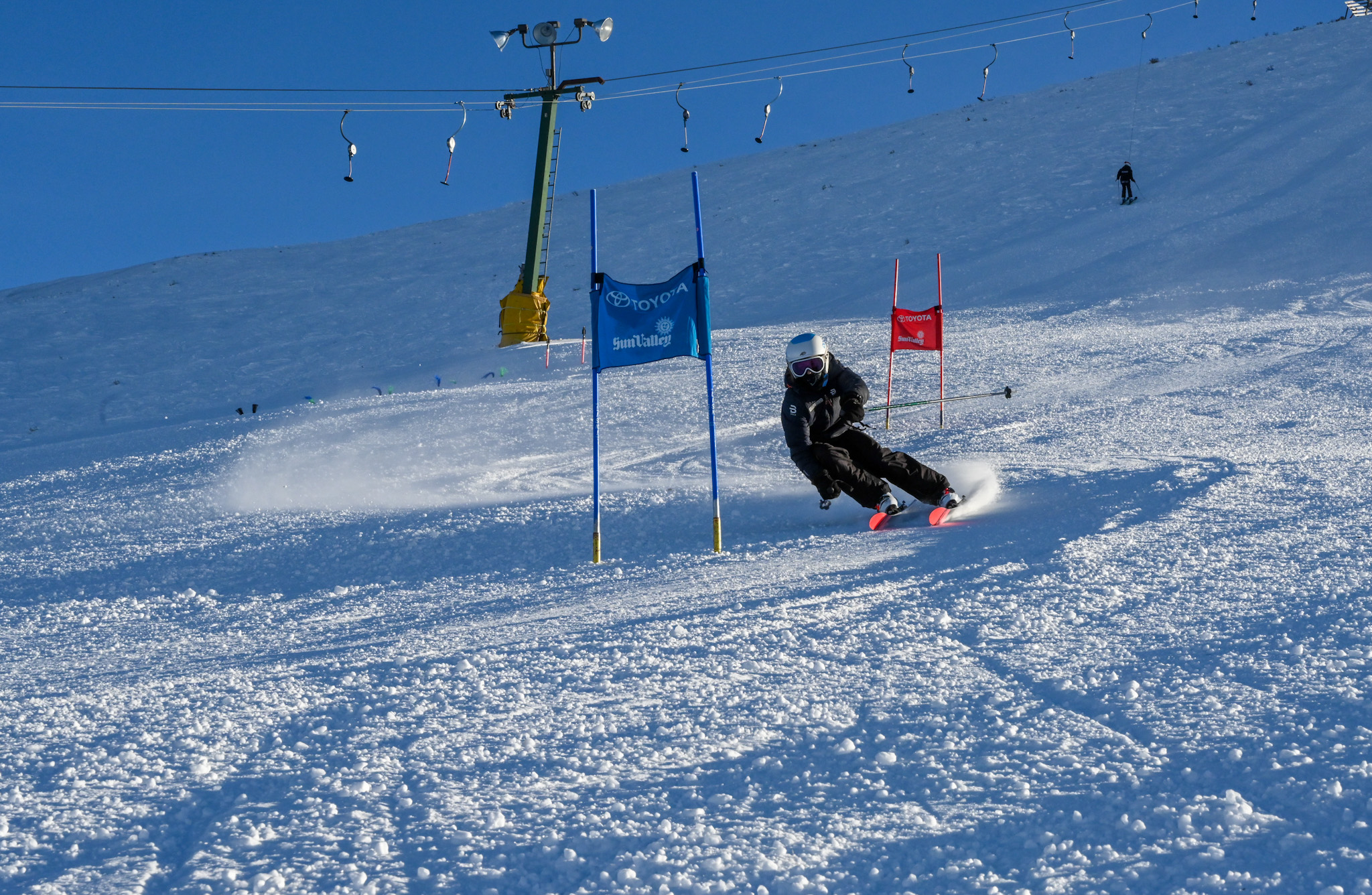
Other athletes, meanwhile, run a GS on Rotarun’s main face. In addition to thinking critically about their own performance, athletes are encouraged to watch one another. Coaches occasionally pull individuals aside to watch their teammates ski and quiz them on the nature of the lines taken: are they high and conservative, or tight and aggressive? This exercise trains athletes to hold an essential question in mind: what can I learn from everyone around me, regardless of skill level relative to mine?
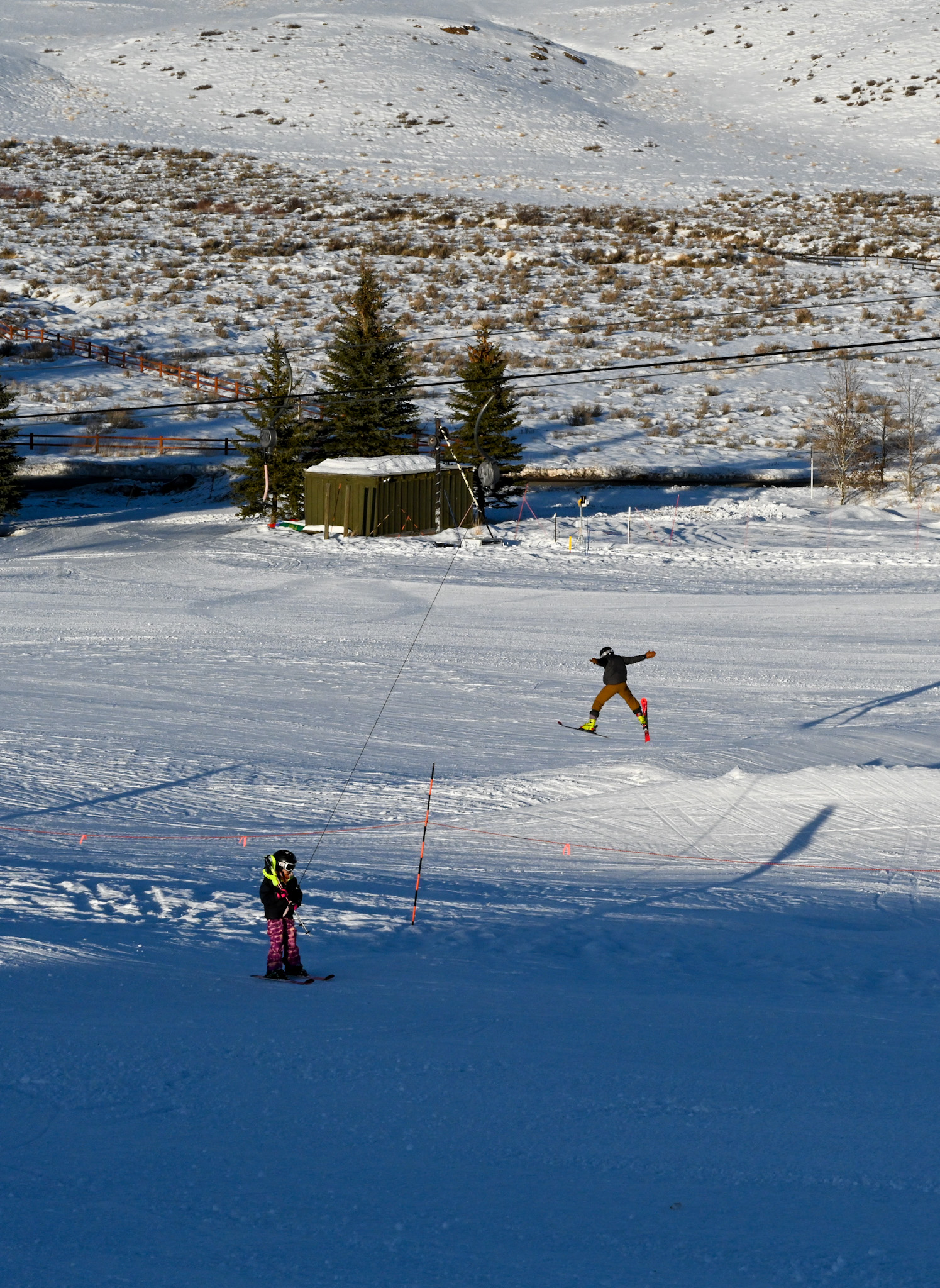
As the sun begins to tuck itself behind Rotarun’s peak, coaches pull the GS course in favor of a panel slalom, closing out the day with some light-hearted, head-to-head competition. While the coaches change out the course, athletes entertain themselves by throwing the biggest spread eagles they can, wherever they can.
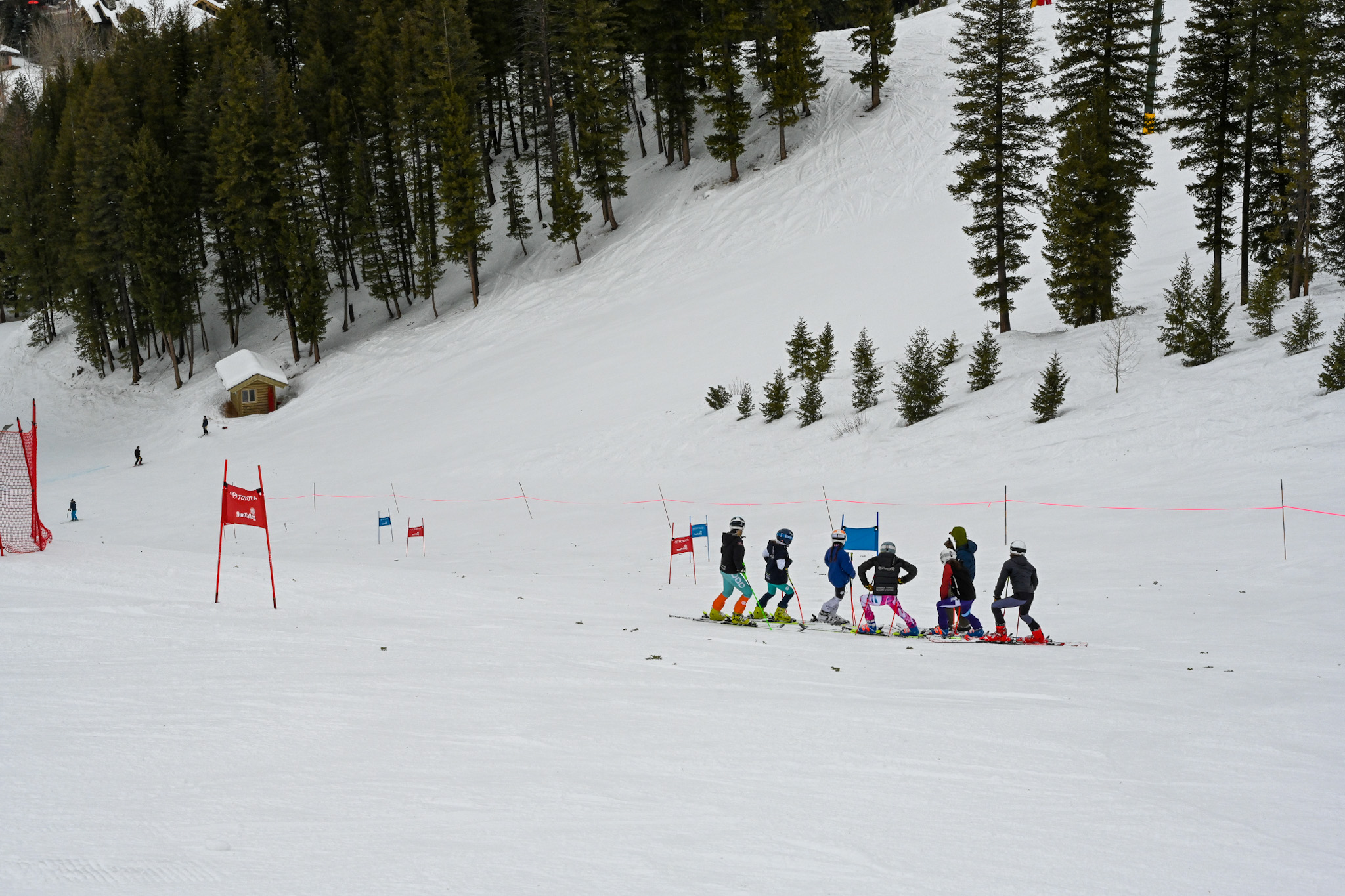
Come the weekend, we’ll catch the Intermountain Division team on Baldy. They train Hemingway-into-Grayhawk, preparing for home race to be set in the same spot the upcoming weekend. The coaches create the best environment they can to place these athletes in a competition headspace. They set up a timing kit, which not only arms athletes with reference points for performance run-to-run, but also re-acquaints them with the race-day pressure of being under the clock. Coaches take nearly forty-five minutes to inspect with athletes, pointing out tricky turns and key locations to generate speed. Finally, they send the athletes down in racesuits and bibs. For two hours, the athletes receive the opportunity to train in a mock-race setting.
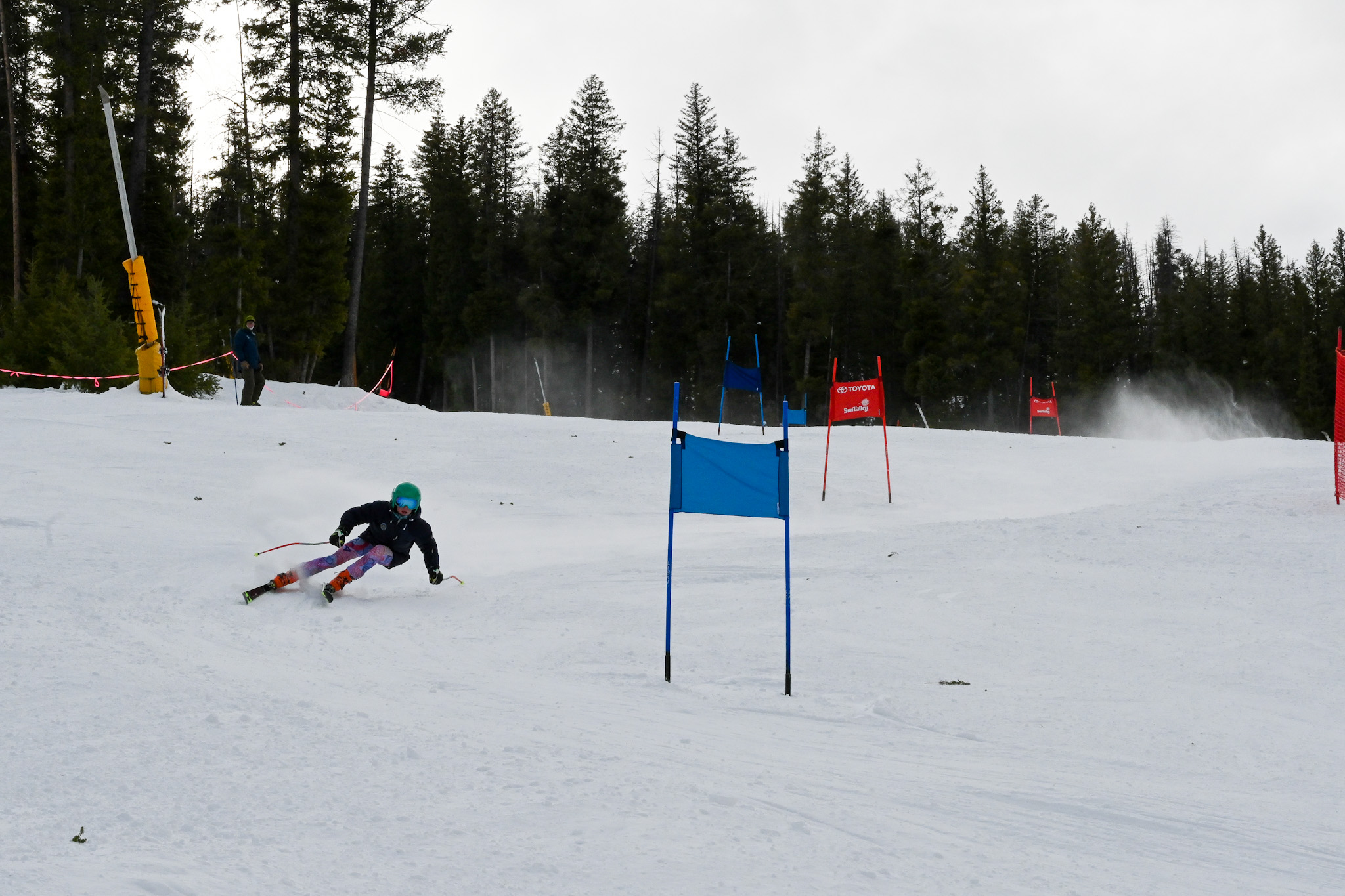
The end of the weekend returns us to Rotarun for the final Pastry Cup of the season. In a year that traditional competition opportunities are far-and-in-between, the Pastry Cup gives North Series athletes an additional opportunity to practice getting into the competitive zone... With some sugar mixed in. What better a way to motivate young athletes than delicious baked goods for prizes?
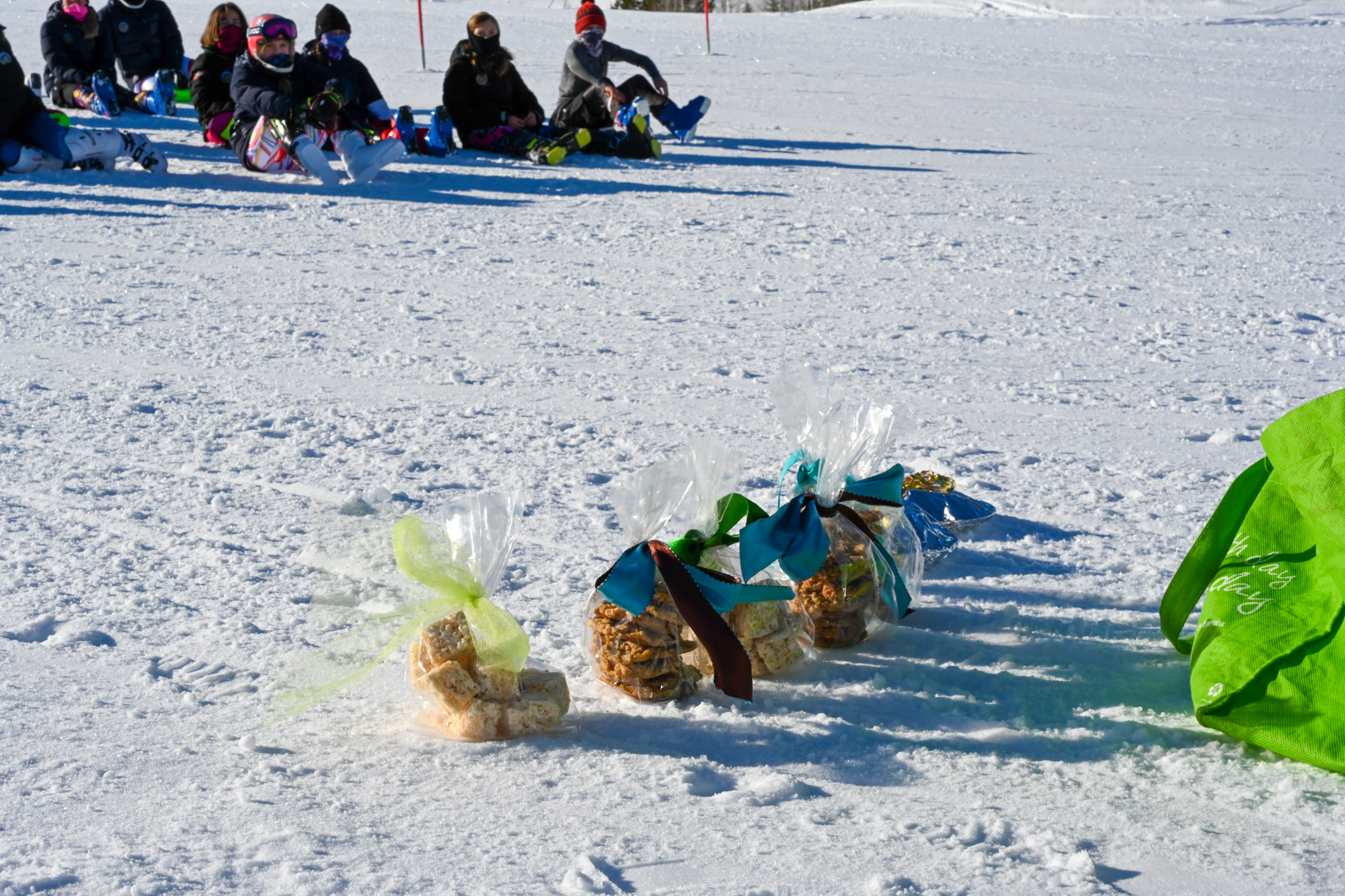
The racers compete in a dual slalom, facing off in tense head-to-head matches. Lynyrd Skynyrd’s Free Bird blasts from speakers at the base of the poma lift, the sun beams down on Rotarun’s slopes, spectators keep an appropriate distance from one another and enjoy the racing from smoldering fire pits aside the parking lot. With the laughter, light, and music, it’s the sort of morning that almost feels as if it could exist outside the pandemic.
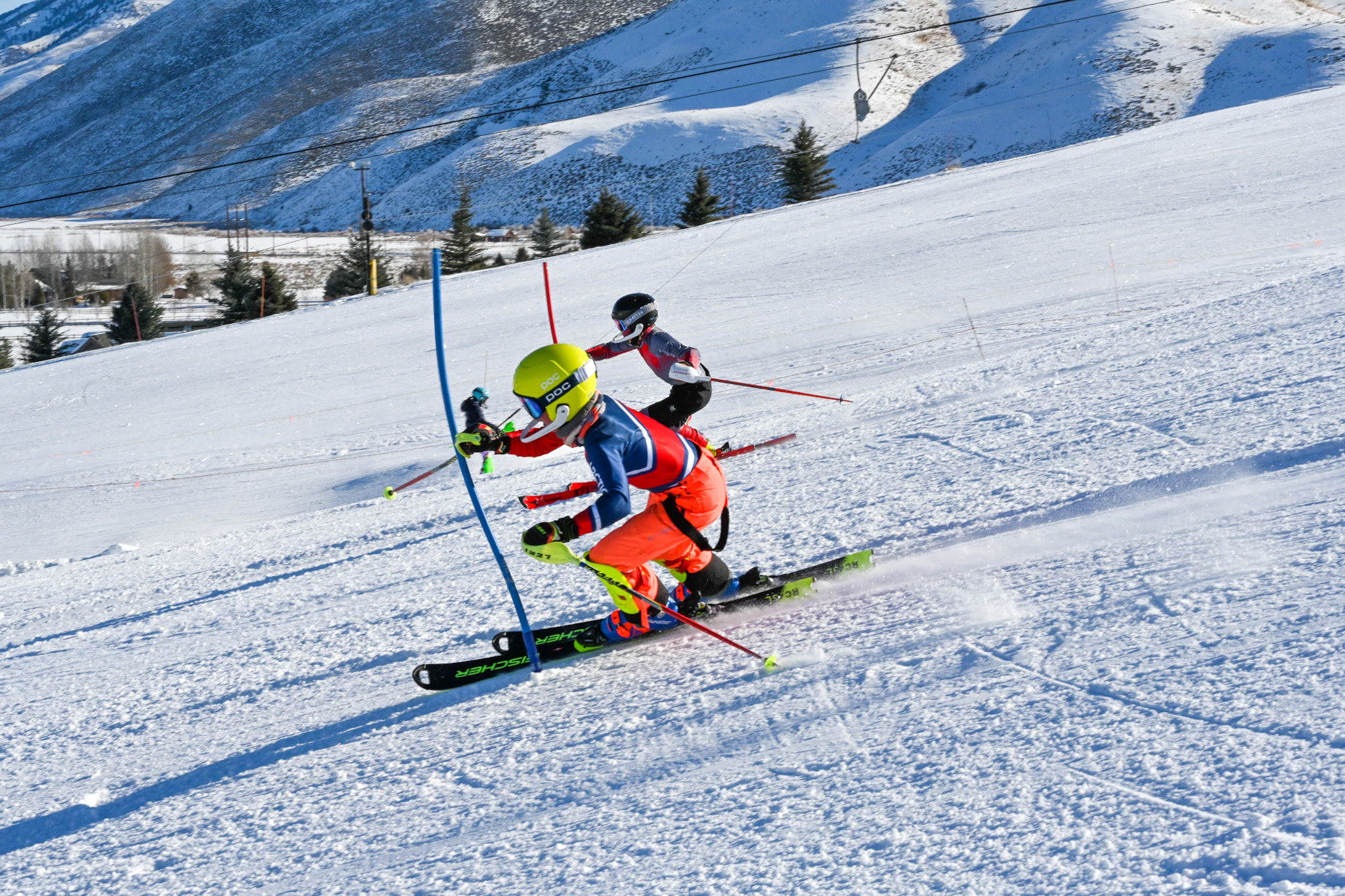
By lunch time, coaches hold awards, announcing the top three female finishes and top three male finishes. Each top finisher gets their choice of coach-baked goodies: rice krispy treats, chocolate chip cookies, chocolate cake. However, while those who make the podium get first choice, every athlete still gets a small taste of victory: enough pieces are made of each treat as to make sure all members of the get a taste. A word of advice: don’t catch yourself standing amid the athletes when the award ceremony concludes, unless you’re ready to run the stampede of ski boots around you as the victors share their spoils.
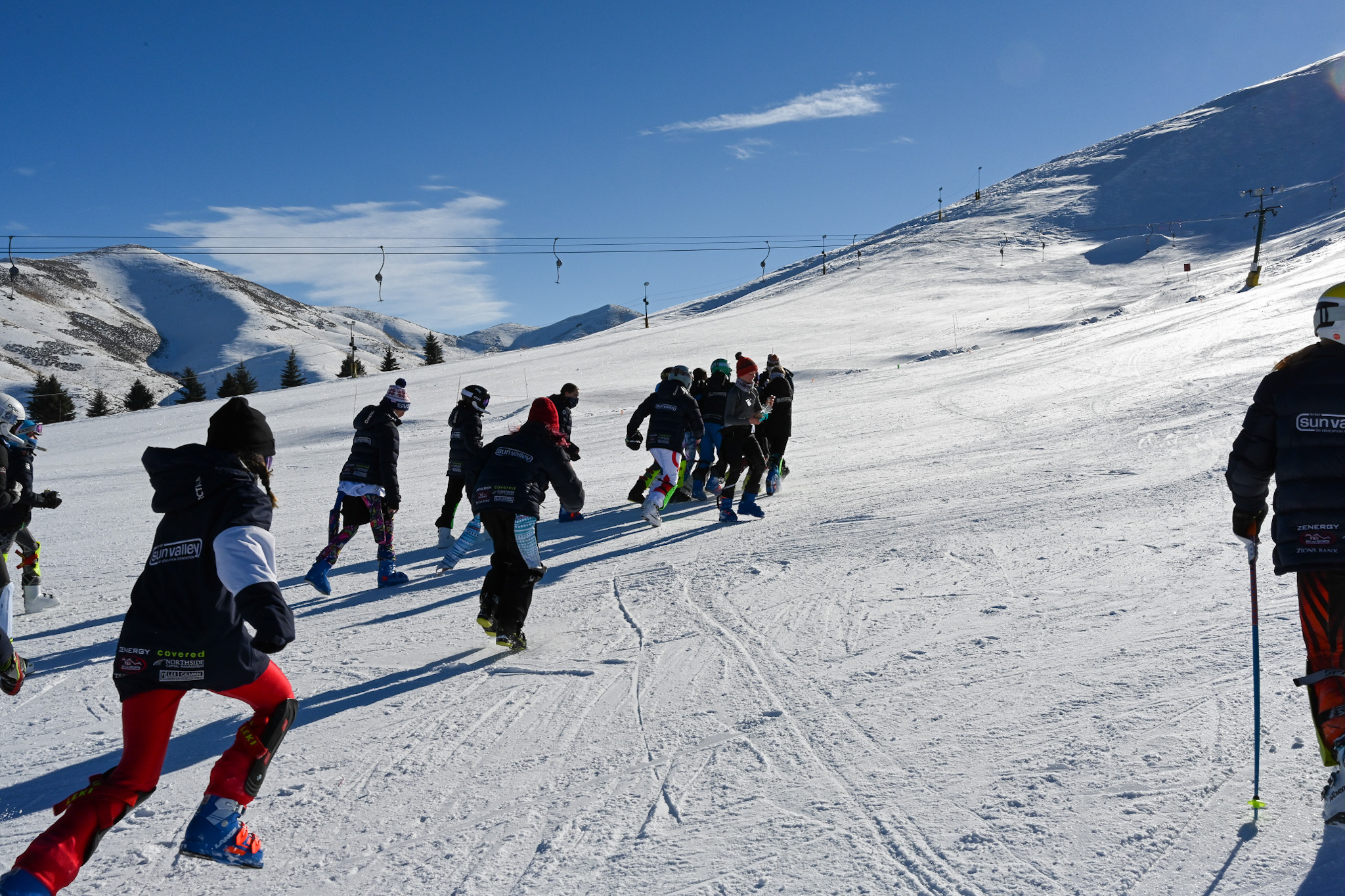
While there’s no guarantee of normalcy this season, the Alpine program pushes forward with this sort of programming: drilling in muscle memory, encouraging critical thought about one’s skiing, re-creating the competitive environment, and of course, keeping things engaging and fun. “At the end of the day, the goal is progression.” Alpine Program director Will Brandenburg explains. “The staff is asked to build their programming to be season-wide, targeted at long term development of an athlete’s skiing. There’s a method to all these moving parts, and the whole goal is developing programming that can continually help athletes progress day-to-day, month-to-month, year-to-year.”
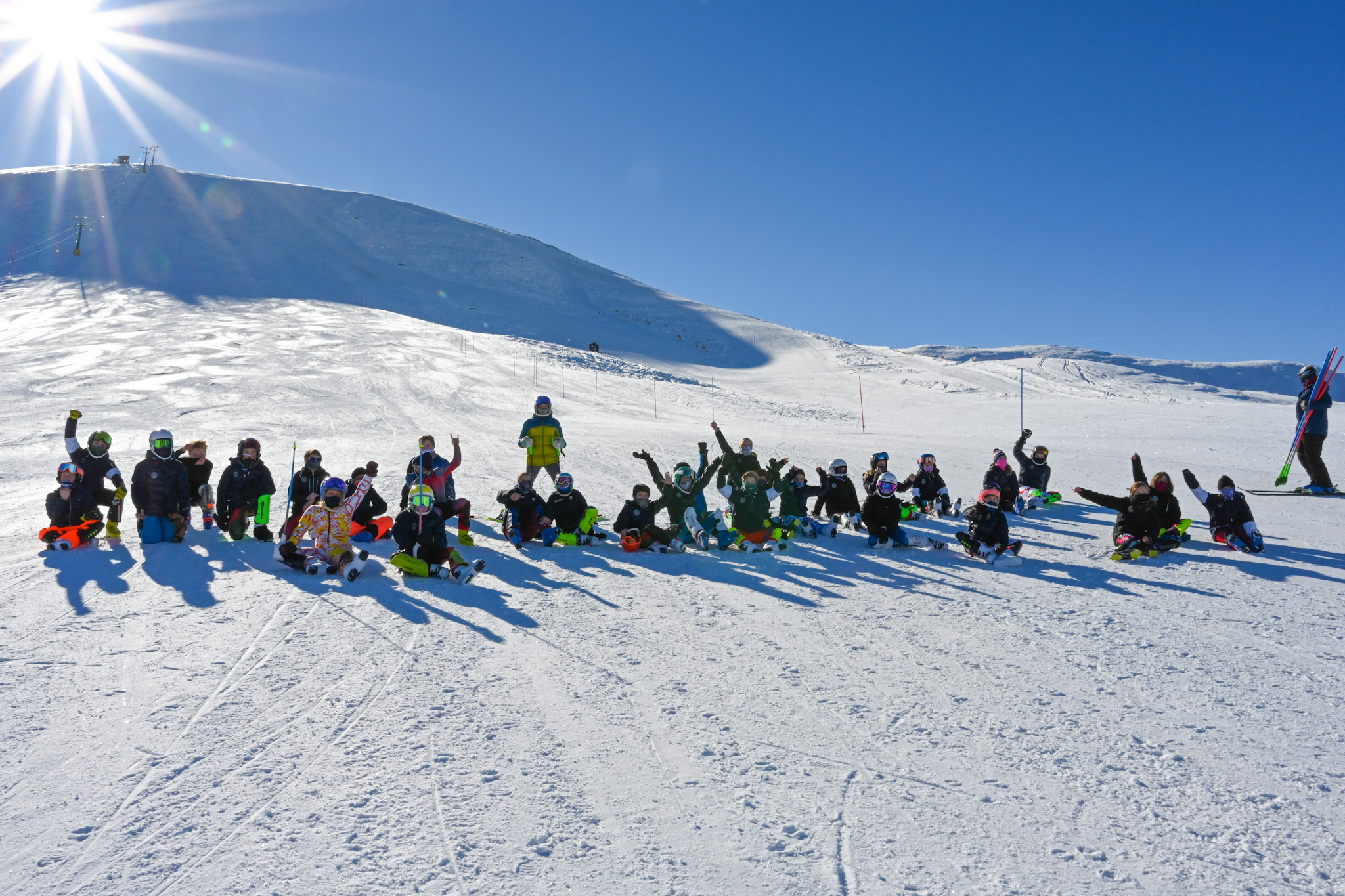
“We build programming that gives the athletes the proper steps to progress; races serve as tests of this progression.” Brandenburg continues. One such testing opportunity was this last weekend, with nine total races held across age groups, locations and disciplines. By-and-large, SVSEF athletes scored big. In Grand Targhee, SVSEF U12 boys made up half of the top ten finishers, two of which were on the podium. In races split between Baldy and Rotarun, SVSEF athletes across genders took 5 out of the 6 first-place finishes. Across the weekend’s events, SVSEF alpine racers secured 14 podium spots out of 33 total opportunities. However, it’s not the impressive finishes that pose a testimony to the hours of programming: it’s the scale of progression across the field.
“Ninety-five percent of the kids are getting better, the whole program is moving forward.” Brandenburg adds. The results demonstrate this too: SVSEF athletes are almost entirely concentrated toward the front half of the field. “If you were to call the head coaches today, they would be like ‘yeah, I really don’t care about the results. We do care, we care as far as the team is moving forward, and that the individuals are getting better at skiing, but not about how we are doing in reference to everyone else.’ Across our coaching staff, they aren’t putting pressure on the kids to ski fast, rather, they are teaching and challenging the kids to ski better.” Brandenburg continues. As he views it, “when you, as an athlete, don’t feel your getting better and progressing, it’s really hard to be motivated to continue to work hard.” At the end of the day, it’s about loving what you do, and loving the hard work it takes. When hard work begets progress, it’s a lot easier for that love of skiing to flourish.
As Brandenburg explains, “I think that’s part of the reason everyone is doing well.”
